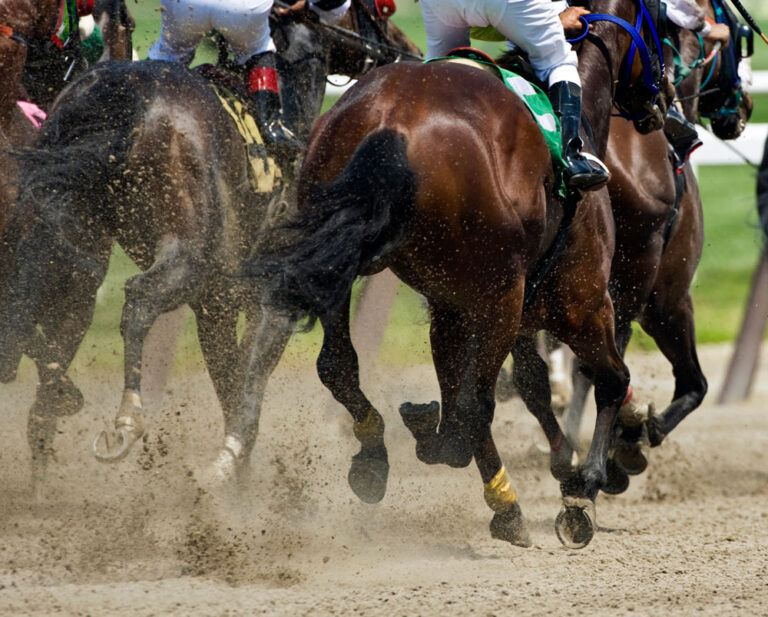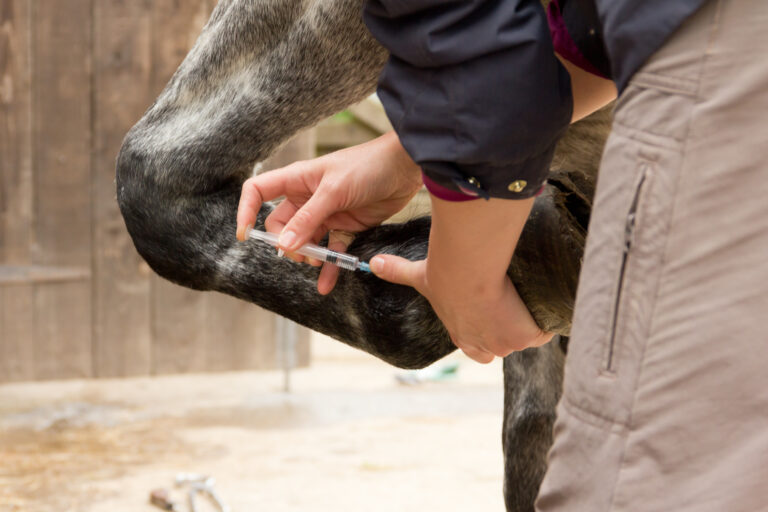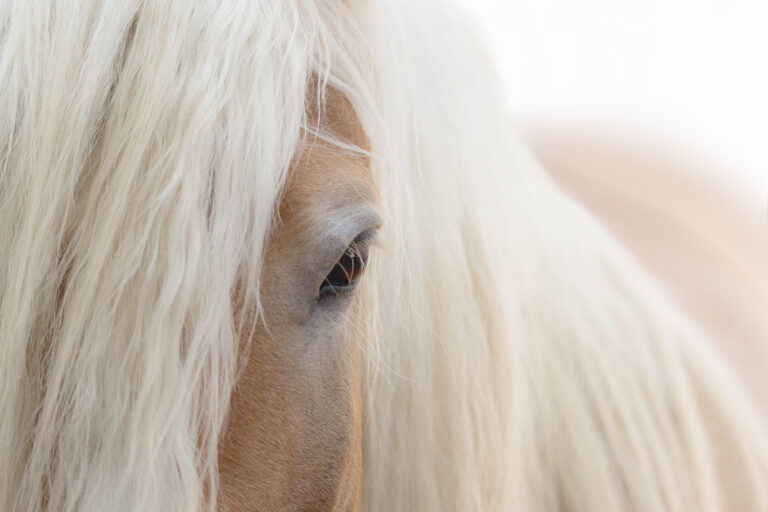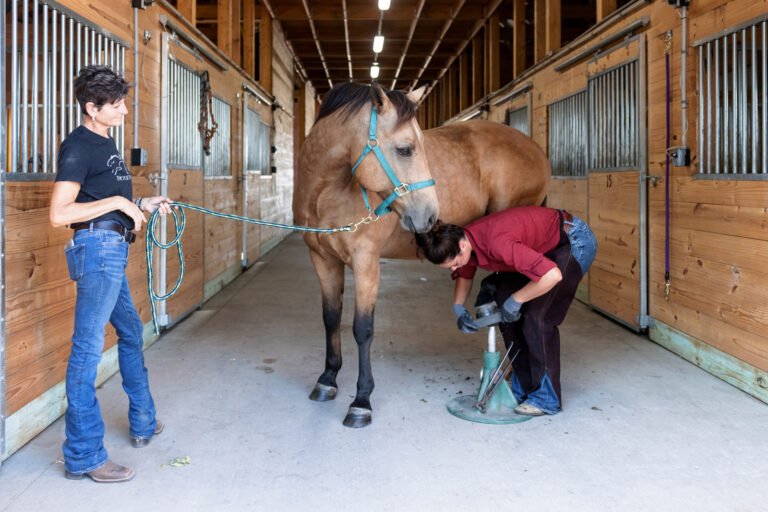
In this episode of the Disease Du Jour podcast, Jennifer Groon, VMD, joined us to discuss importing horses to the U.S. from Europe. She talked about the recommended tests to perform prior to purchasing the horse and after the horse arrives in the U.S., the quarantine process, common health issues in imported horses, and the role of an in-flight veterinarian.
Recommended Testing to Perform Prior to Purchase
Groon said it’s important for veterinarians to tell their clients to perform blood testing before falling in love with a horse and completing a prepurchase. Geldings need a piroplasmosis, dourine, and glanders test, and mares and stallions need an additional CEM swab. “Otherwise, you can do the whole prepurchase, spend all that money, and then the horse can’t be imported,” she said.
Flying Horses Overseas
Groon said there are two ways to fly horses. The first way involves walking them up a ramp into the plane and building stalls around them, and the second way involves putting horses in air stalls and loading them onto cargo planes.
Groon used to work as an in-flight veterinarian, and she said most horses fly really well. “It’s like a van ride without the starts and stops,” she said. “The only part they don’t really like is the take off and the bump on the landing.”
Groon said an in-flight veterinarian’s main responsibility is to keep the horses safe and calm, which 90% of the time means administering sedation as necessary. “Before you even take off, you prefill all your syringes, and you’re ready to go, because you don’t have much time to get to a horse to sedate it as it’s trying to jump out of its stall on a plane,” she said. In addition to giving sedation, Groon would occasionally sew lacerations or manage colics en route.
To become qualified as an in-flight veterinarian, Groon only needed to be licensed in the U.S. and have a passport. She was allowed to treat horses on the plane and when off-loading, but otherwise she didn’t perform any veterinary work in the destination country.
Quarantine Process for Horses Imported From Europe
Once horses arrive in the U.S. from Europe, they spend 72 hours in their arrival port. After that, geldings can be released, and mares and stallions spend 21 days at a quarantine facility, where they are tested for CEM three times.
Owners can ride and care for their horses at these quarantine facilities, but they cannot give the horse any sort of antibiotic, including creams or antimicrobial shampoos. This can be challenging because many horses get cellulitis, allergies, and respiratory diseases when they arrive in the U.S., and veterinarians are limited in how they can manage these conditions. If a horse becomes sick in quarantine, they must go to a hospital that has a quarantine setup, which can be very expensive for the client.
Groon also noted that quarantine facilities typically have hours, even for veterinarians. She said you usually cannot check on a horse after 4:00 p.m. without paying a fee, which can be close to $500, making it challenging to manage a sick or colicky horse.
Common Health Issues in Imported Horses
Common health problems Groon encounters in recently imported horses include shipping fever, skin conditions, and EPM. She tests every horse for EPM as soon as they come out of quarantine, and many test positive, even though the disease doesn’t exist in Europe. “Either they’re getting it in quarantine, which is definitely a possibility, or they’re getting exposed to something in Europe,” she said, noting there is some speculation these horses have toxoplasmosis, though research hasn’t confirmed this.
Recommended Veterinary Work to Perform Post-Quarantine
Once horses come out of quarantine, Groon performs new Coggins tests so she has them in her records, performs fecal tests, and vaccinates for rabies and botulism.
Groon recommends performing a full lameness exam on every horse that comes out of quarantine since the prepurchase was done by someone without a vested interest. She also said it’s important to take your own radiographs. “The views that we take here are a little different unless you ask for specific views in Europe,” she explained.
Final Thoughts
In closing, Groon said there is real value in being able to try a horse before you buy it, and clients might not always save money by shopping in Europe, even if horse prices are cheaper. “There are a lot of risks, and I’ve seen a lot of people spend a lot of money on a cheap horse, and it’s just money thrown away,” she said. “I think it’s something you have to educate your clients on, because it can be really heartbreaking when you get a horse here that’s just not what you thought it was.”
About Dr. Jennifer Groon
Jennifer Groon, VMD, graduated from the University of Pennsylvania’s School of Veterinary Medicine in 2006 and went on to complete a two-year course of study under the guidance of Stuart Brown, DVM, investigating the use of anabolic steroids at Keeneland Sales Grounds. She was a member of the Hagyard Equine Medical group in Lexington, Kentucky, for seven years. During her time at Hagyard, she gained extensive experience in Thoroughbred reproductive management, field medicine, and sales of Thoroughbred yearlings and 2-year-olds in training. She also served as the in-flight veterinarian for horses traveling overseas.
Groon began working at the Mid-Atlantic Equine Medical Center in 2013. She served as the Head of Quarantine and as a USEF/FEI Veterinary Apprentice for Eventing at the 2007 Beijing Welcome Games Test Event and the 2008 Beijing Olympic Games. In 2010, Groon, along with the USDA and the Office of the State Veterinarian, headed up the quarantine and the quarantine facility located at the Northern Kentucky/Cincinnati Airport for the Alltech FEI World Equestrian Games. She has since built a successful sport horse practice, The Feiner Equine, where she splits her time between Central New Jersey and Wellington, Florida.
Groon enjoys taking part in the entire equine life process. She is passionate about the challenge of breaking young Thoroughbreds and taking them to the track or taking racehorses that have been retired and giving them new careers as three-day event horses. In her free time she actively competes her horses through Intermediate level, runs marathons, and is involved in the local Pony Clubs.
Related Reading
Stay in the know! Sign up for EquiManagement’s FREE weekly newsletters to get the latest equine research, disease alerts, and vet practice updates delivered straight to your inbox.




